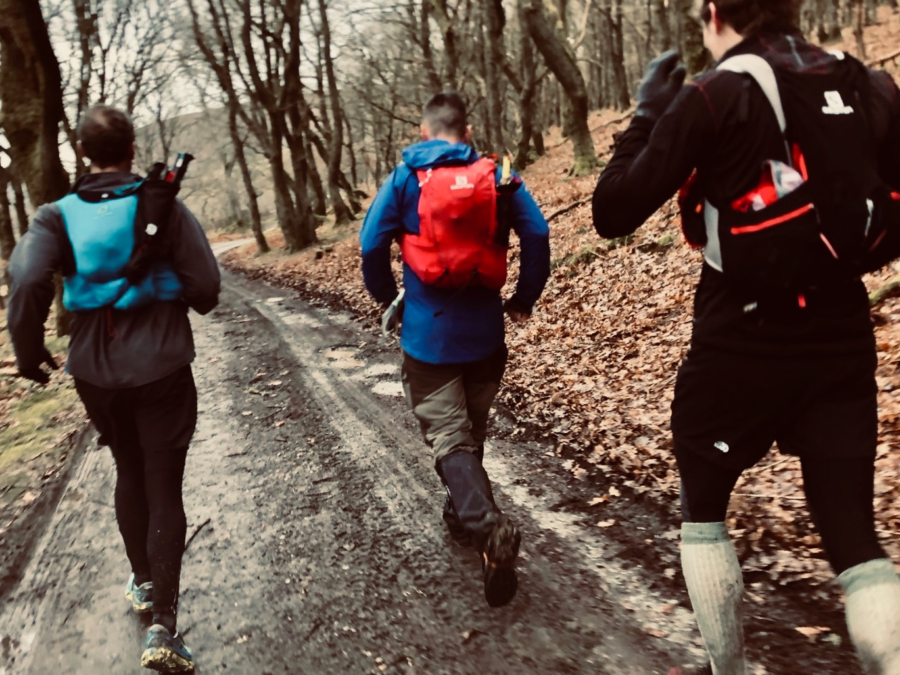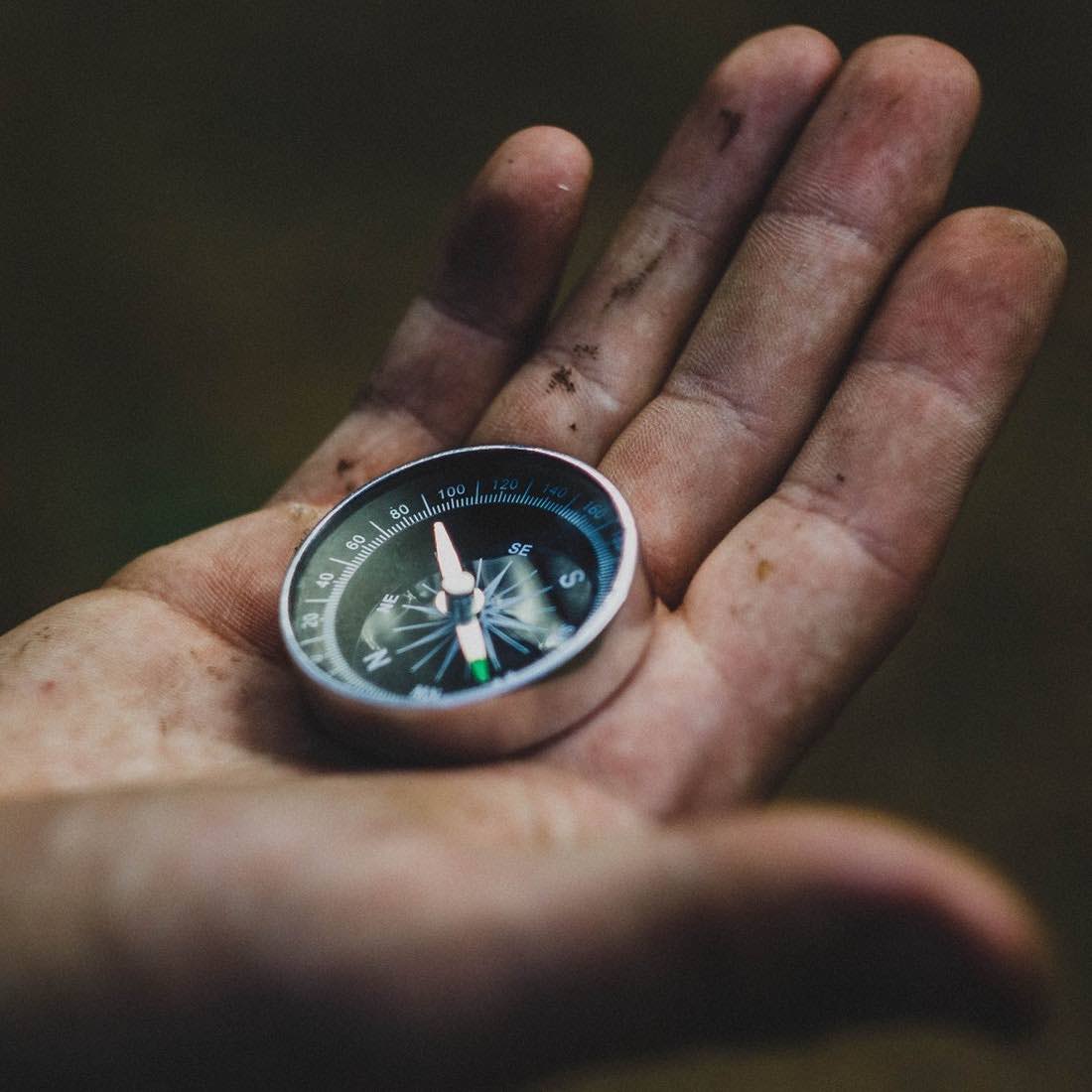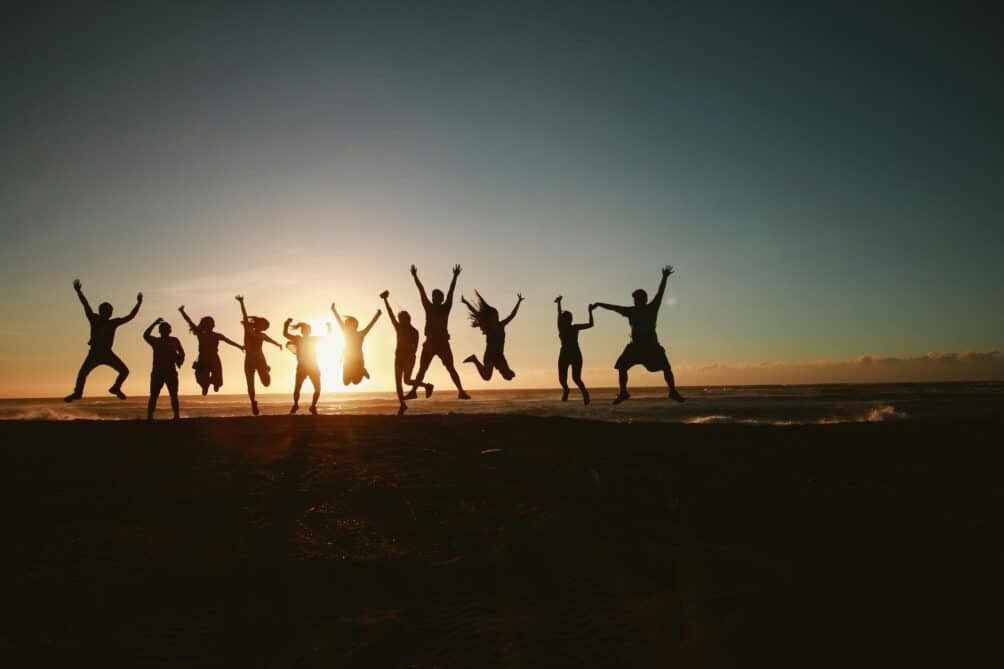Want to know what kit to use for an ultra trail race? Here are recommendations and the best kit available for The Dragons Back and similar multi-day ultra-marathon races.
While preparing for the Berghaus Dragons Back Race in 2019 I was asked a lot of questions about the best kit and equipment to use while ultra-running. So I have listed the kit I used in training and during the race. Using the recommended kit list (from the official website) as the outline for this post hopefully it should be easy to follow. I have also included a few top bits of kit from other people with whom I have raced with.
For ease, I have included hyperlinks for most of the kit mentioned so you can see exactly what I am talking about. You are under no compulsion to use these links and feel free to shop around if you like! If you have any other recommendations, then please feel free to leave a comment with your thoughts. Enjoy!
Free Personal Leadership Action Plan
Just sign up here to receive your free copy
MANDATORY ‘HILL’ KIT
According to the race rules the following kit must be worn or carried by the participants in their ‘hill bags’ at all times. I have made my recommendations under each bullet point:
Ultra-running Backpack or Vest
- Hill bag
- Salomon Sense Ultra 8. Eight litres can sound small but if you purchase and pack carefully this little pack has enough capacity to see you through a very long day, and it weighs next to nothing.
- Salomon quiver (for poles) attached to the above
- Salmon ADV Skin 12. A little more space (and weight) than the Sense Ultra 8 but a very popular bag/running vest. This was my second choice for the race.
- Inov8 RaceLite 16. I used this little bag for training in the winter as I could get more wet and cold weather kit in it. I have raced with it before as well but I prefer a bag with water bottles on the front rather than relying on a water bladder. The link is to the latest version now called the Race Elite 16.
Ultra-marathon Clothing
- Waterproof Jacket or Smock (with taped seams and a hood)
- Waterproof Trousers (with taped seams)
- Inov8 Ultra pants. These match the Ultrashell jacket and are equally small and light.
- Spare warm top (spare means unworn at the start)
- I tend to use a very light down jacket as an emergency top. I have the Arc’teryx Cerium Jacket (my version is without the hood). It isn’t cheap but it is incredibly warm considering how small and light it is when packed away.
- Hat and gloves suitable for the weather conditions
- Warm hat – I have a beanie hat with a waterproof lining. Mine is out of production but Sealskinz makes an equivalent.
- Running cap – I have a cheap Kalenji cap from Decathlon but Salomon also make some very good ones
- Waterproof mitts – I use the Inov8 Race Ultra mitts
- Running gloves – I always have a thin pair of gloves for running that I can also wear under my mitts if needed. Silk liner gloves are good for this.
Trail Running Shoes
- Fell or mountain running shoes
- Hoka One One Mafate Speed 2 – I have now done several ultras in these shoes. Do check the fit as people can find the toe box quite narrow on Hokas but they provide amazing cushioning and great traction at a low weight.
- Salomon Speedcross 4 – these are the spare trainers that I use for technical terrain and for wet conditions. They have great support and are amazing on wet grass and mud when other trainers fail the traction test.
Other Items
- Survival bag (not a blanket)Recommended: Sol Survival Bag
- The equivalent from Amazon: Shayson Survival Sleeping Bag
- Map (as supplied by race organisers) and compass (magnetic and full size)Silva Ranger Compass. Small and simple to use.
- I did not have a race map for Dragon’s Back training so I used the Ordnance Survey Landranger 1:50 000 series. They generally have more detail than the race maps which is useful for route finding on practice days:
- Snowdon/ Yr Wyddfa – (Day 1) Landranger 115
- Dolgellau (Day 2) Landranger 124
- Aberystwyth (Day 3) Landranger 135
- Elan Valley and Builth Wells (Day 4) Landranger 147
- Landranger 160 (Brecon Beacons) and 159 (Swansea and Gower) for Day 5
- Headlamp AND spare battery OR spare torch (with sufficient light to be able to navigate in the darkness)I like 300+ for my main lamp and prefer AAA batteries rather than rechargeable due to the weight and longevity of the power. Therefore my choices are the:
- Petzl Actik (I use this as my main head torch for this sort of event but if you are doing long periods in the dark you might want something even brighter)
- Petzl Zipka (spare/back up)
- Whistle. If you get one of the bags listed above your whistle will already be fitted to the running pack.
- If you want an alternative, then Lifesystems make a good one I use for general mountain use.
Trail Food and Water
- Sufficient food. I prefer to have as much ‘normal’ food as possible for this sort of long event. I tend to make up a bag of savoury snack s (cheese and dried meat) and a bag of sweets snacks (nuts, dried fruit, and chocolate).
- Energy gels/bars (for emergencies). You can quickly get bored of energy bars and gels, so it is worth having these in reserve to top up your other food. They really are an acquired taste, so it is worth experimenting with a few brands and types to see which you find palatable. I generally use:High5 Energy Gels
- Clif Shot Bloks (these are like yummy sweets that you can leave to dissolve in your mouth)
- High5 Electrolyte Sports Drink (you can drop these tablets into your water bottles – especially good in hot weather)
- Water bottle and/or hydration system: Salomon Soft Flask 500ml – I have two of these that came with my Salomon running vest. They are great; easy to drink from without removing from your vest and easy to remove and clean too.
- Camelbak Reservoir (1.5 litres) – I prefer not to use a reservoir or bladder but I have a Camelbak for really hot days where I definitely need to carry more water and cannot rely on streams.
- Steritabs – it is worth have some purification tablets on you just in case you need to fill up from a stream.
Other Essential Kit
- Money (at least £50 or equivalent in case you need to get a taxi to the overnight camp)
- Keep in a waterproof case with your phone. I use an Aquapac case.
- Waterproof pen/pencil/chinagraph writing implement
- Sharpie pen (I find these permanent pens are good for map marking)
- Pencil
RECOMMENDED ‘HILL’ KIT
The following kit is also recommended:
- Mobile Phone (Although we recommend that all participants carry a mobile phone there is no guarantee of phone reception along many sections of the route).
- Whichever phone you chose to carry I can recommend the following Apps:
- Altimeter (Very useful aid for navigation in low visibility conditions).
- I have various altimeter watches. At present, I have a Garmin Fenix5 that is also a GPS and activity tracker.
- GPS (For participants who are not completely confident of their map and compass skills in all conditions).
- Garmin Fenix5 – This is great at giving your location, but I am still trying to programme it to follow a plotted route. When the GPS function is running it may not last a full day so having it on all the time may not be the best plan anyway. Either way remember the charging cable so you can re-charge in the evenings!
- Garmin Foretrex – The battery life is better than the Fenix5 but still small and light enough to not be a bother. I would not use this on most endurance events but for something like the Dragons Back, when the navigation is such a challenge, it is worth considering.
MANDATORY ‘CAMP’ KIT
The following kit must be included in the participants’ Overnight Bag (max 60L):
- Overnight bag.
- 60L is not much to keep you going for a week, but it can be done! You want it to be waterproof and hardwearing (it will get chucked around). I have an old Ortlieb canoe style dry bag for this purpose. I have not been able to find one online so I would offer the following two as alternatives:
- Ortlieb Duffle Bag – this is what I am thinking of upgrading to as it is much easier to manage your kit compared to a normal dry bag.
- Lomo Dry Bag. A friend has recommended this one to me which is a cheaper and simpler version of the Ortlieb Duffle.
Sleeping Kit
- A complete change of clothing including spare shoes that can be worn at the overnight camp.
- Spare trainers (as above; whichever I am not using between my Hokas or, Salomons)
- Flip-flops or sandals – I tend to have some, when space allows, as they are good for letting feet air in the evenings and avoid rubbing blisters etc. I have some Reef flip flops.
- Outdoor clothing that can be used on the hill if necessary. For example, clean running t-shirts, running leggings/tracksuit.
- Warm sleeping bag (3 Season recommended)
- Robens Caucasus 600. I used this 3-season down bag for walking the Tour de Mont Blanc and it dealt with the varying conditions up and down the hill. It packs down nicely. Unfortunately, it seems to be discontinued so I would recommend:
- Rab Ascent 600 – Rab make excellent down bags and this one is warmer, but as light, as the Robens bag
- Silk liner – I have a silk liner mainly to keep the sleeping bag clean but I also often sleep in this with the sleeping bag draped over like a duvet if it’s hot. I have one from Decathlon. If you want top-quality then go for the Rab version but these are a bit more pricy.
- Sleeping mat (Thermarest style inflatable mat recommended)
- Forclaz Air – I was converted to this sleeping mat from Decathlon while on the TMB last year. It is compact when deflated and gives you about 4cm thickness of comfort when inflated. And it’s cheap!
- Therm-a-Rest – Therm-a-rest is the Rolls-Royce of sleeping mats and is of great quality. This one offers the sort of comfort you want on a multi-day event.
Other Camp Kit
- Plate/bowl, mug and cutlery
- Plastic spoon. The Light My Fire spork is hard to beat.
- Camelbak Forge thermal mug. This is a luxury that I carry with me almost everywhere (mainly due to my love of coffee!)
- I tend to use a sealable plastic container (approx 0.5l) to use as a plate/bowl. The Sistema boxes are good for this.
- Sponge and cloth for washing and drying your plate etc
- Sunblock (minimum factor 30) –I am a big fan of Neutrogena sunblock.
- Sufficient personal food for eating on the hill each day.
- The race organisers recommend that you don’t underestimate this as there will be no additional ‘snack’ food available at the overnight camp. Therefore, it is worth seeing what you need on your training days.
- See more notes on food in the ‘hill kit’ section above.
- Personal First Aid kit to include plasters, blister treatment, antiseptic ointment, and painkillers as a minimum.
- The Dragons Back website has a Blister Treatment Kit containing:
- Sterile Medical Scalpel Blade (size #11) x5
- Antiseptic Ointment 30ml / Antiseptic Wipes x5
- Steropore Sterile Island dressings (7cm x 6cm) x5
- Sterile Cotton Swabs x10
- Hydrocolloid Dressings (such as Compeed) x4
- Kinesiology Tape (5cm x 5m) x1
- Small Scissors x1
OTHER RECOMMENDED KIT
Other Clothing
- Midge head net and insect repellent (you may want this on the hill depending on the weather). Note that a mosquito head net is of no use.
- An insulated ‘duvet’ jacket
- A fresh set of running clothes for each day.
- My running kit usually comprises of:
- Long sleeve t-shirt – Run and Become have a great selection
- Short sleeve t-shirt – my favourite is made by Columbia
- Compression shorts – I use either Skins or 2XU compression tights
- Leggings/tights – I have some Nike Power Tech running leggings which I have used for training but am thinking about getting some Skins or 2XUfull length compression tights for the race.
- Running shorts – The Kalenji Trail Running Shorts from Decathlon as seriously good value.
- Socks – My favourite socks for comfort and reducing blisters are the Injinji toe socks.
Other Bits and Pieces
- A power bank (ca. 10,000-20,000mAh) for recharging devices.
- Juice power station – These are more robust than some other power banks. I have the XL 16800mAh version.
- Remember to take your charging cables for your phone, watch/GPS too!
- Travel pillow or pillowcase
- I often just use my duvet jacket as a pillow but Thermarest makes a good travel pillow and there are some cheap ones on Amazon.
- Wallet, credit card and/or sufficient cash to enable you to return to the start/finish early if needed. Keep waterproofed in an Aquapac case or similar.
- Any luxury food items you want.
Hygiene and Wellbeing
- Personal washing things and towel
- LifeVenture trek towel. I have used these for races, treks and expeditions all around the world.
- Bodywash/clothes wash. LifeVenture makes an all-purpose soap which I like. It is environmentally friendly and can wash your clothes as well and your body!
- Deodorant. Keep it small, but you will want it (and you will want everyone else to have it too!)
- Foot powder. A top tip is to decant into a thick plastic bag or dry bag that is big enough to put your foot in. You can then easily powder your feet while avoiding wasting the powder or spilling it everywhere. If it is really hot and you are prone to suffer from athlete’s foot then I recommend Mycota powder.
- Toothbrush/paste
- Shaving kit – as required of course! I try and have an electric shaver to keep the beard at bay.
- Anti-septic gel. Hand gels are great, especially when living in tented camps, to keep stomach bugs at bay.
- Earplugs
- I find the cheap mouldable foam ones are best. Get a few sets as spares.
- Anti-chaffing / lubrication ointment
- The thought of chaffing is amusing until you have it. Chaffing can literally be excruciating and a race-ending problem. I have used Glide for several races and avoided discomfort.
FURTHER RECOMMENDED KIT
Here are some kit recommendations that go beyond the list on the Dragons Back website:
- Foam Roller or ball. It may be a squeeze to get a roller into your kit bag but it is certainly good for training. I will take at least a ball to help ease off the muscles after each day’s racing. I got this pack that includes a couple of rollers and balls from FitBeast.
- Walking poles. I find poles really useful for very steep terrain and are also great if you get injured and need to self-assist to get off the hill. I am a massive fan of my Black Diamond Carbon Z Poles. You have to pick the correct length as they are not adjustable but they are very light and sturdy. I can also recommend The Leki Micro RCM poles are a popular equivalent.
- Buff. I always have a buff, and usually, carry it on my wrist. Highly versatile it works as a sweatband, a neck warmer, hat or sun cover depending on the need.
- Sunglasses. As with my Buff, I always carry sunglasses. Glasses with interchangeable lenses are not great for the high street or beach but can be a lifesaver when racing! I often have yellow lenses for use in overcast conditions. I have some made by Bloc which is not too expensive.
Phew! Quite a list I know. As I mentioned at the beginning this is just the kit, I have had experience of so please do add your recommendations to the comments.
Also, just to say that the links to Amazon affiliate links so I do get something if you did purchase something after following the link. All of the kit above comes from real testing and recommendations and Amazon is generally my go-to for shopping but if you feel uncomfortable with using the links then feel free just to use the recommendations in your search engine. To put your mind at rest I generally only earn pennies but it does go a little way to supporting the running of the website so thank you if you do use the links!
Leadership Development: Master the Top Leadership and Life Skills
Better lead in life and work to maximise your success. Sign up and access materials for free!




